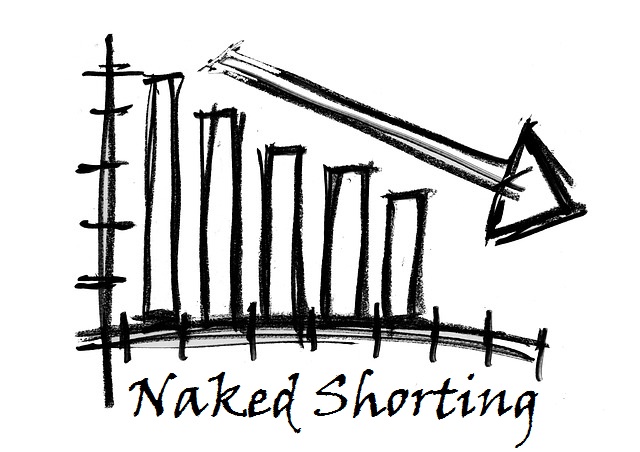
To understand why naked shorting is bad for the markets, you first need to understand exactly what a short sale is. I’ll begin with a couple of quotes from Wikipedia:
“In finance, short selling (also known as shorting or going short) is the practice of selling assets, usually securities, that have been borrowed from a third party (usually a broker) with the intention of buying identical assets back at a later date to return to the lender. The short seller hopes to profit from a decline in the price of the assets between the sale and the repurchase, as the seller will pay less to buy the assets than the seller received on selling them. Conversely, the short seller will incur a loss if the price of the assets rises. Other costs of shorting may include a fee for borrowing the assets and payment of any dividends paid on the borrowed assets. Shorting and going short also refer to entering into any derivative or other contract under which the investor profits from a fall in the value of an asset.”
Naked short selling has an insidious twist:
“Naked short selling, or naked shorting, is the practice of short-selling a financial instrument without first borrowing the security or ensuring that the security can be borrowed, as is conventionally done in a short sale. When the seller does not obtain the shares within the required time frame, the result is known as a “fail to deliver”. The transaction generally remains open until the shares are acquired by the seller, or the seller’s broker, allowing the trade to be settled.[1] Naked short selling can be used to fraudulently manipulate the price of securities by driving their price down, and its use in this way is illegal.”
Did you get that? Short sellers are required to borrow the shares sold within a certain time frame (usually about 3 days). Until this time passes, it’s just a short trade. Once the seller fails to borrow the shares, it’s considered a “fail to deliver”, but the transaction is not cancelled. The seller is still allowed to ‘sell’ shares that don’t even exist.
How can something that doesn’t exist ever be sold at all? The standard stupidity says that it’s okay – when the shares are bought back at the end of the trade, it’s mathematically the same as destroying those nonexistent stocks, so the net sum is a zero. But this ignores the fact that, for as long as those ‘nonexistent’ stocks are in fact, counted as REAL, the price of that stock IS manipulated downward.
Let’s see how this works in a simplified market.
Paper Beats Rock
Assume I have 10 special rocks, and the value of them all together is 10 bucks. If I sell them, the value of each is a dollar. If someone comes along and says there are really 20 special rocks and he has 10 of them for sale at half price, then the value of each of my rocks will go down by 50%, even if nobody buys his rocks. My rocks haven’t changed, but the perception now is that since there’s so many rocks they shouldn’t be worth that much, and this guy over here says he’ll sell them for 50 cents. My net worth based on rocks has just gone down by 50 percent, due to some lying asshat who wanted to take my stuff by lying to the public.
Now, let’s further assume that this jerk actually sold some of his rocks to unsuspecting buyers, constituting a short sale in the special rock market. The buyers expect delivery of said rocks. (Remember, this guy doesn’t have any real rocks.) The only place that rock can come from is me. What happens if I won’t sell any rocks?
Think about that and then think about the ‘freeze’ in the credit markets in 2008. If rocks were dollars, the same thing would happen in my little story. The whole rock economy would tumble and fall. The reason is simple: So many non-existent rocks exist, and so many people have bought them. The real rocks aren’t for sale anymore, so there’s literally NO WAY anybody will get any part of what they’ve paid for. So many bought what they thought were rocks, but all they got were paper promises.
